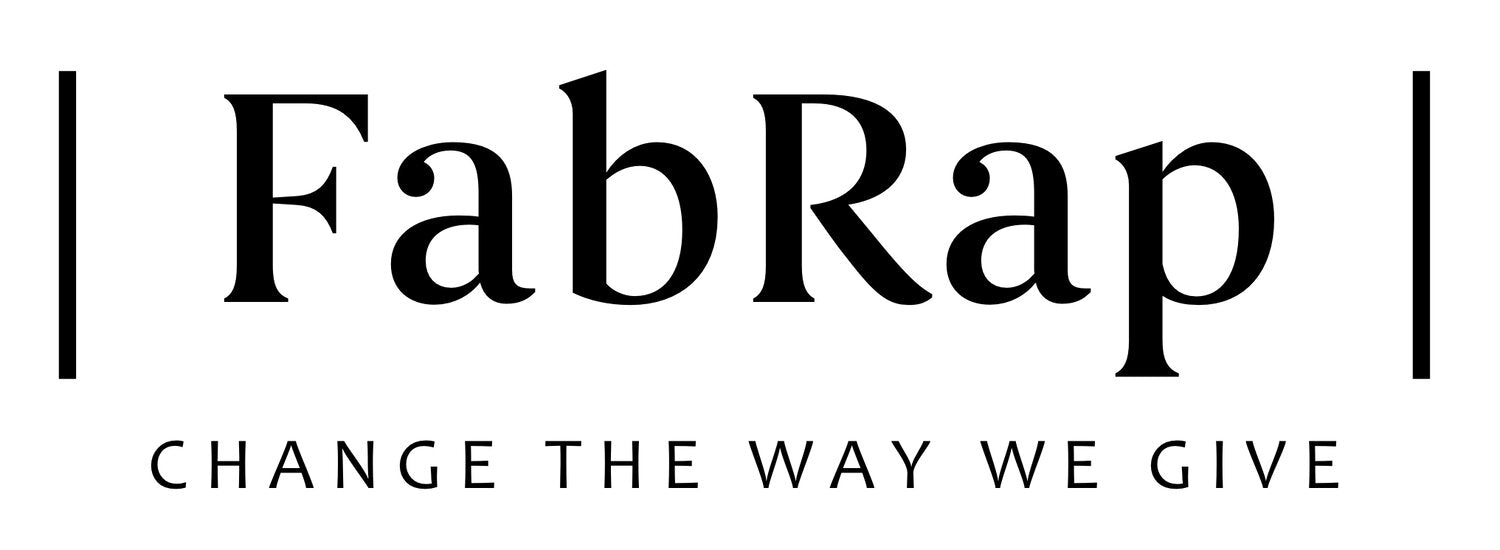Part of the fun of wrapping with fabrics is the amount of versatile and different textures available to you. When it comes to furoshiki, the selection of fabrics is pivotal, combining durability, aesthetic appeal, and functionality. In this blog post, we will explore some of the most common materials used in crafting furoshiki, exploring their unique qualities and significance in this timeless tradition.
Cotton - The Versatile Classic
Cotton is a favoured choice for furoshiki due to its softness, breathability, and versatility. It's readily available in various weights and textures, allowing for different wrapping styles. At FabRap, we use organic cotton which is more sustainable and less harmful to our environment in its production than conventional cotton.
Cotton is not only light, it is also highly absorbent, easy to wash, and durable which makes it suitable for a wide range of purposes, from gift wrapping to carrying items. Plus, you can easily iron cotton which is an essential for reusing your fabric gift wrap. As it is such a low-maintenance fabric it retains its shape and colour, even after multiple washes.
Its softness makes it gentle to the touch, its durability and strength makes the fibers resilient to wear and tear. Thus, cotton fabrics can withstand frequent washing and maintain their structural integrity, ensure longevity and a long lifespan of the product.
A great advantage for using cotton furoshiki is their customizability. Cotton fabrics readily accept dyes, prints, and finishes, allowing for a wide array of colours. That means you can even dye it yourself and make a furoshiki of your own creation that can be decorated with fabric markers as well.
Silk - Elegance and Grace
Silk is known for its luxurious feel and lustrous appearance and it brings an air of sophistication to your furoshiki. Its smooth texture and vibrant colours make it an ideal choice for special occasions. Its elegant and opulent appearance makes it a sought-after material for high-end clothing and luxury items.
Silk is lightweight and smooth and it possesses excellent draping qualities, making it perfect for elegant gift presentations and decorative wraps. Its delicate fibres create a fabric that feels soft and gentle against the skin, its texture providing exceptional comfort.
Although it appears to be delicate, silk is surprisingly strong and durable. It can withstand tension and stretching without losing its shape and with proper care, it can last many years.
Just like cotton, silk readily accepts dyes, resulting in vibrant and richly coloured fabrics. This makes it an excellent choice for furoshiki.
Linen - Timeless Simplicity
Linen is valued for its natural, earthy appearance and durability. It offers a slightly textured surface and a casual elegance suitable for everyday use. Linen is even stronger than cotton, making it resilient to wear and tear.
It is highly absorbent, durable, and known for its ability to become softer and more pliable with use, making it a sustainable choice for furoshiki. It is derived from the flax plant which requires fewer pesticides, fertilizers, and water compared to other crops. Thus, its cultivation is eco-friendly.
Linen fabrics come in various weights and weaves, offering versatility in terms of usage. From lightweight, breathable clothing to heavier upholstery fabrics, linen adapts well to different applications. Depending on the use of your furoshiki, you can use whatever weight you require.
Linen fabrics also exude a classic and timeless aesthetic due to their natural, earthy appearance and casual elegance. This makes it perfectly adaptable to modern and traditional styles.
Hemp - Strength and Sustainability
Hemp, known for its strength and eco-friendly properties, is gaining popularity as a sustainable material for furoshiki. It boasts durability and resistance to wear and tear. Interesting fact: hemp fibers possess UV-resistant properties, providing protection against harmful sun rays. This makes your linen furoshiki a great accessory for outdoor apparel.
Hemp is biodegradable and decomposes easily, reducing its environmental impact. It can be recycled, reused, or composted at the end of its lifecycle, contributing to a circular economy. The cultivation of hemp also enriches soil health by reducing soil erosion and aiding in carbon sequestration.
Rayon - The Synthetic Alternative
Rayon, a semi-synthetic fabric, provides a more affordable alternative with a smooth texture and vibrant colours. It mimics the appearance of silk and is commonly used for everyday furoshiki. The fiber is derived from natural sources such as wood pulp or bamboo.
The material is versatile, affordable, and available in various finishes, making it a budget-friendly option while retaining a luxurious look. It is not only light and comfortable, it is also durable. Rayon fabrics are generally easy to care for and maintain. They often have good wrinkle resistance, requiring minimal ironing compared to some natural fibres. It can also be blended with other fibres, improving its strength, stretch, or durability. Some rayon production methods can be more eco-friendly, depending on the source material, for instance bamboo.
The diverse range of materials used in crafting Furoshiki wraps embodies the essence of this ancient Japanese art form. Each fabric brings its unique characteristics, whether it's the luxuriousness of silk, the durability of hemp, or the versatility of cotton. Understanding the qualities and significance of these materials allows us to appreciate the artistry behind furoshiki and their harmonious blend of functionality and aesthetic appeal. As we embrace the beauty and utility of furoshiki wraps, let's celebrate the rich tapestry of materials that contribute to this timeless tradition!
------------------------------------------------------------------------------------
|

